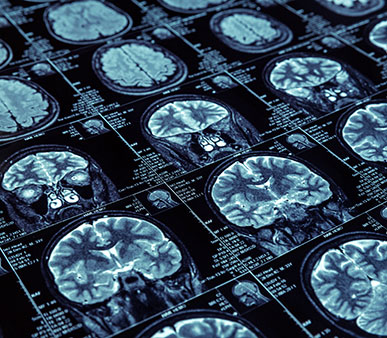This is the second in a three-part blog series on use cases for imaging artificial intelligence. Access part one and part three.
As mentioned in our previous post on imaging AI, there has been a data explosion in healthcare in the last decade, especially in medical imaging, which consumes approximately 30% of the overall health data storage volume. With study data growing by 4x in the same period, health systems and radiology departments are overwhelmed with structured and unstructured imaging data.
 The growing demand for diagnostic imaging by patients and referring physicians results in more than 300 million diagnostic radiology images taken in the U.S. every year. Radiologists not only have more studies to read each day, but much more data to sift through per study to get a full view of the patient using all available insights to make an accurate diagnosis.
The growing demand for diagnostic imaging by patients and referring physicians results in more than 300 million diagnostic radiology images taken in the U.S. every year. Radiologists not only have more studies to read each day, but much more data to sift through per study to get a full view of the patient using all available insights to make an accurate diagnosis.
It’s not uncommon for a radiologist to read more than 100 images in a single day, a number that grew from about 60 images per day five years prior. It’s also been documented that when radiologists work faster, their interpretation error rate rises substantially.
But how accurate can radiologists be when they are overloaded with studies? That has become a significant concern for the American College of Radiology, which is trying to address the issue, in part, with clinical decision support technologies and other components of their Imaging 3.0 Initiative.
The High Cost of Diagnostic Errors
Twelve million Americans are impacted every year by diagnostic errors, which are defined as failures to provide accurate and timely diagnoses or communicate explanations to patients, according to The National Academy of Medicine.
Radiology has a relatively high diagnostic error rate, with studies indicating false positive rates up to 2% and false negative rates up to 30%. Besides the obvious health implications of missed or inaccurate diagnoses, errors also lead to higher healthcare costs. Some estimates put the cost of unnecessary testing, misguided treatments and malpractice claims stemming from diagnostic errors at $100 billion per year.
Diagnostic errors are also the leading cause of malpractice claims in radiology, as well as primary care, emergency medicine and most sub-specialties.
Improve Diagnostic Efficacy with Artificial Intelligence
Diagnostic errors are a pervasive issue in radiology and throughout medicine. Advances in artificial intelligence are helping radiologists prioritize and analyze imaging studies to expedite and improve diagnostic accuracy.
With the proper medical imaging workflow integrations, AI can help radiologists:
- Proactively prioritize studies that need immediate attention and route them to the appropriate destination
- Identify prior studies that may need re-examination
- Increase the speed and accuracy of image interpretation
- Analyze past cases
- Reduce bias from image interpretation
- Scale their abilities to handle larger patient loads
Leading Edge Technology for AI Imaging
DataFirst supports the American College of Radiology’s Imaging 3.0 Initiative by delivering systems that enable AI applications to work across modalities, optimizing practice management and patient care.
If you’re ready to take action, DataFirst can help.
Connect with us online or call 800-634-8504 to get started.


